Website Development
The importance of a website in attracting and admitting new students

Lourdes Calderón
Lourdes Calderón | Oct 21, 2025 | 5 MIN READ
Oct 21, 2025 5 MIN READ

In the digital era, an educational institution's website is much more than an online catalog or a business card. Today, it is the primary channel for communicating with, attracting and converting prospects into students. Before visiting a campus or scheduling a call with admissions, the vast majority of parents, students and families first visit the website.
According to various studies, more than 70% of educational decisions begin with an internet search. That means that if your institution's website doesn't inspire trust, provide adequate information or is not optimized for the user, you will likely lose enrollment opportunities to competitors that do.
In this article, we'll explore why the website is key to student recruitment, what elements it must have to be truly effective and how to make it the center of your digital strategy.
Changing student and family behavior.
The process of choosing an educational institution has changed radically in the last 10 years. Before, much of the information was obtained through word of mouth, education fairs or physical visits. Today, it all starts online.
A student searching for a university, academy or college will likely follow this path:
-
He or she will Google programs related to his or her interests.
-
He or she will enter the first websites that appear in the results.
-
He will evaluate factors such as available programs, costs, admission requirements, reputation and testimonials.
-
Compare different institutions before taking the next step (filling out a form, scheduling a call, or requesting more information).
This shift makes the website not optional, but critical. If you fail to capture attention in those first few minutes of exploration, you will lose your prospect.
First impressions count: design and trust
An educational website is the first digital impression of your institution. In fact, research shows that it takes users as little as 0.05 seconds to form an opinion about a website.
-
An outdated or unprofessional design can give the impression that the institution is outdated or lacks resources.
-
A site that is difficult to navigate conveys disorganization and can frustrate the user.
-
A lack of clear information generates distrust and increasesabandonment.
In contrast, a website with modern design, intuitive navigation, authentic student images and up-to-date content generates immediate credibility. And trust is a key factor in a family's or student's decision to move forward in the admissions process.
The website as the center of the digital marketing strategy.
The website is not an isolated channel. It is thecenter of an educational institution's entire digital marketing strategy.
-
Social media campaigns should drive traffic to landing pages within the site.
-
Google Ads and SEO depend on the site being optimized to appear in the top results.
-
Emails sent from marketing or admissions must invite the user to visit specific sections (forms, program landing pages, blogs).
In other words, all digital initiatives should converge on the website, becausethat's where the conversion happens: filling out a form, downloading a brochure, scheduling a campus visit or initiating enrollment.
Key elements that an educational website must have
For the website to really contribute to student recruitment, it must have certain essential elements:
a) Clear program information.
Each program or course should have its own page with:
-
Syllabus.
-
Duration and modality.
-
Costs and forms of financing.
-
Admission requirements.
-
Testimonials or success stories.
b) Optimized contact forms
The form is the bridge between the anonymous visitor and the prospect. It must be visible, easy to complete and ask only for the necessary information.
c) Intuitive navigation
The site structure should be clear: home → programs → admissions → student life → contact. If the user gets lost, he/she will probably abandon.
d) Engaging multimedia content
Campus videos, student testimonials and virtual tours increase engagement and trust.
e) Educational blog
A blog with useful articles (e.g. tips for preparing for college, how to choose the right career) helps rank on Google and attract leads early in the funnel.
f) Mobile optimization
60% of educational traffic comes from smartphones. A site that is not mobile friendly is a huge missed opportunity.
Personalization: from anonymous visitor to potential student
Today's users expect personalized digital experiences. With the integration of an educational CRM like HubSpot, the website can adapt to the visitor's behavior:
-
Display relevant information based on the program of interest.
-
Enable chatbots to answer frequently asked questions.
-
Send automated emails after completing a form.
This turns the site into an active recruitment tool, not a static showcase.
Measuring: how to know if the site is working
HubSpot and other tools allow you to measure key metrics:
-
Number of visitors to the site.
-
Form conversions.
-
Most visited programs.
-
Traffic sources (Google, social networks, email).
This data is essential to optimize campaigns and ensure that the site is really contributing to admissions goals.
The website as a competitive advantage
In saturated educational markets, the difference between gaining or losing a student can be in the quality of the website. An institution with an up-to-date, fast, user-friendly and student-centered site conveys innovation, reliability and professionalism.
Conversely, an outdated site can drive a prospect away, regardless of the actual academic quality of the institution.
Conclusion
The website is not an accessory, it is the digital heart of any educational strategy to attract students. From generating the first impression to accompanying the prospect in their final decision, the well-designed website, optimized and connected with tools like HubSpot, can make the difference between stagnating or growing.
Investing in a quality website is investing in the sustainability and competitiveness of the institution.
TABLE OF CONTENTS
Stay Updated with Our
Latest Posts
Subscribe now to receive the freshest content, insights, and updates directly in your inbox.

Recent Articles


2024 © The Orange Box Agency – All rights reserved



.png?width=90&height=90&name=facebook%20(1).png)
.png?width=94&height=96&name=Vector%20(1).png)